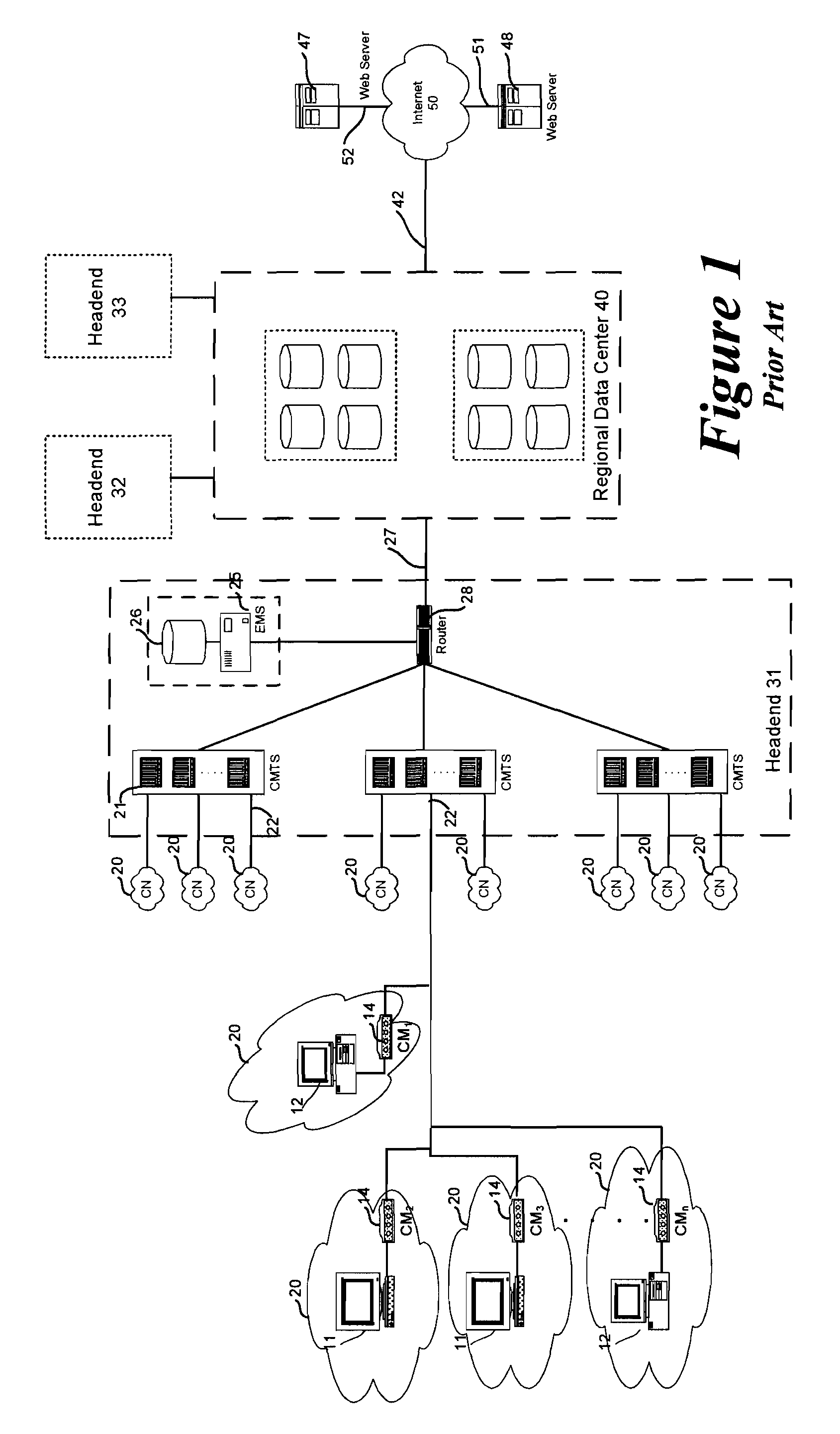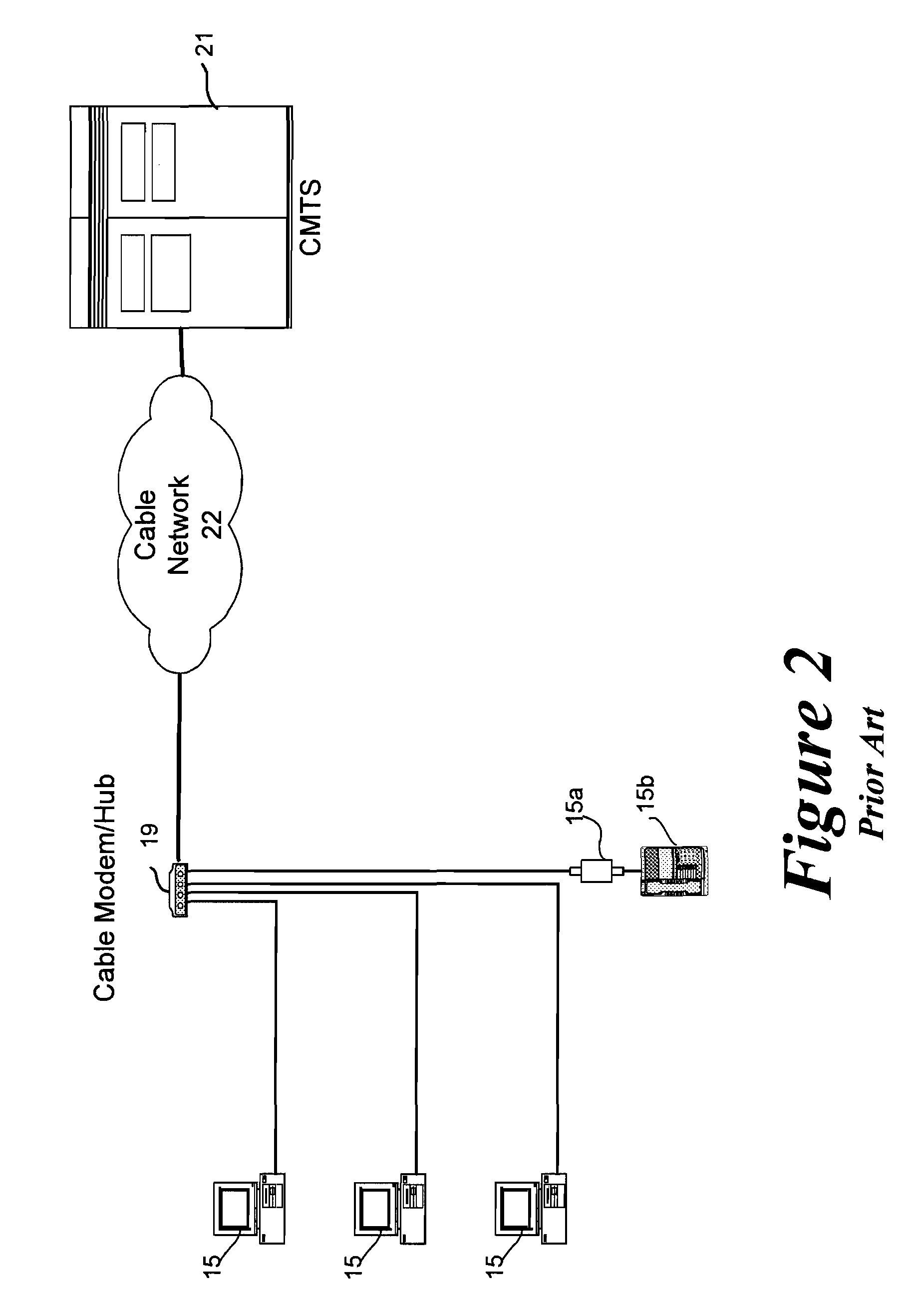Method to block unauthorized access to TFTP server configuration files
a technology of unauthorized access and configuration files, applied in the field of blocking unauthorized access to tftp server configuration files, can solve the problems of insufficient coverage of docsis version 2.0, ineffective methods, inherent security weaknesses, etc., and achieve the effect of reducing or eliminating unauthorized access to cable modem configuration files
- Summary
- Abstract
- Description
- Claims
- Application Information
AI Technical Summary
Benefits of technology
Problems solved by technology
Method used
Image
Examples
Embodiment Construction
[0033]The invention is an application designed to reduce or eliminate unauthorized access to cable modem (CM) configuration files. The CM configuration file is retrieved by an authorized user from a trivial file transfer protocol (TFTP) server in response to a user TFTP getfile request.
[0034]When a cable modem boots, it sends a DHCP request to a DHCP server as illustrated as step 308 of FIG. 3. As used herein “cable modem boots” refers to the startup sequence of steps performed by a cable modem during power up or initialization. This may occur upon initial powering of the modem, subsequent to a loss of synchronization signal, or after a forced reset from the DOC network carrier.
[0035]FIG. 5 illustrates step 308 in acquiring an Internet protocol address in greater detail. The request for IP address is in the form of a DHCP packet. Table 1 indicates the general form of a DHCP packet (size of data in octets is indicated in parenthesis). Table 1 is organized by bit and octet.
[0036]
TABLE...
PUM
 Login to View More
Login to View More Abstract
Description
Claims
Application Information
 Login to View More
Login to View More - R&D
- Intellectual Property
- Life Sciences
- Materials
- Tech Scout
- Unparalleled Data Quality
- Higher Quality Content
- 60% Fewer Hallucinations
Browse by: Latest US Patents, China's latest patents, Technical Efficacy Thesaurus, Application Domain, Technology Topic, Popular Technical Reports.
© 2025 PatSnap. All rights reserved.Legal|Privacy policy|Modern Slavery Act Transparency Statement|Sitemap|About US| Contact US: help@patsnap.com



